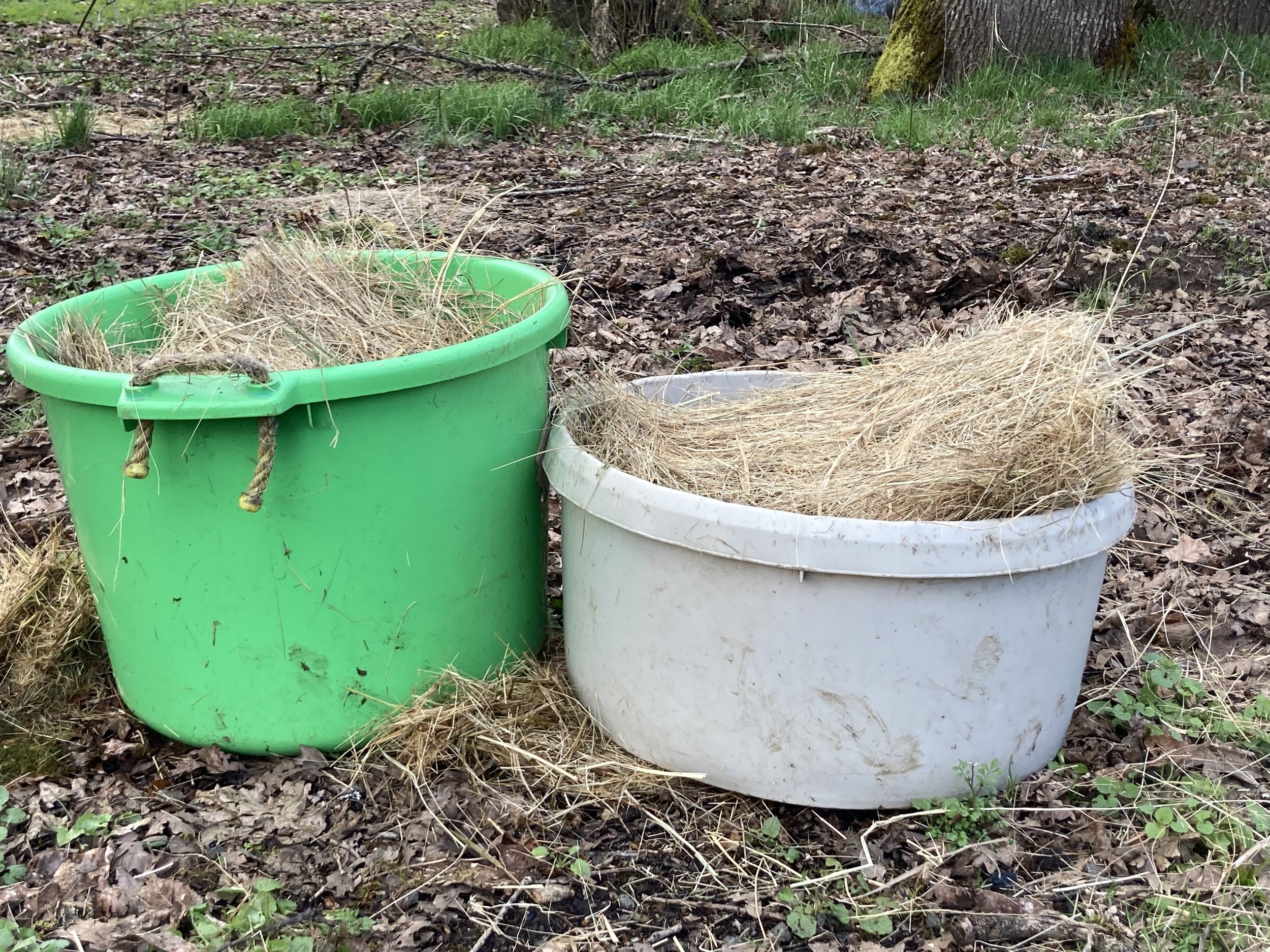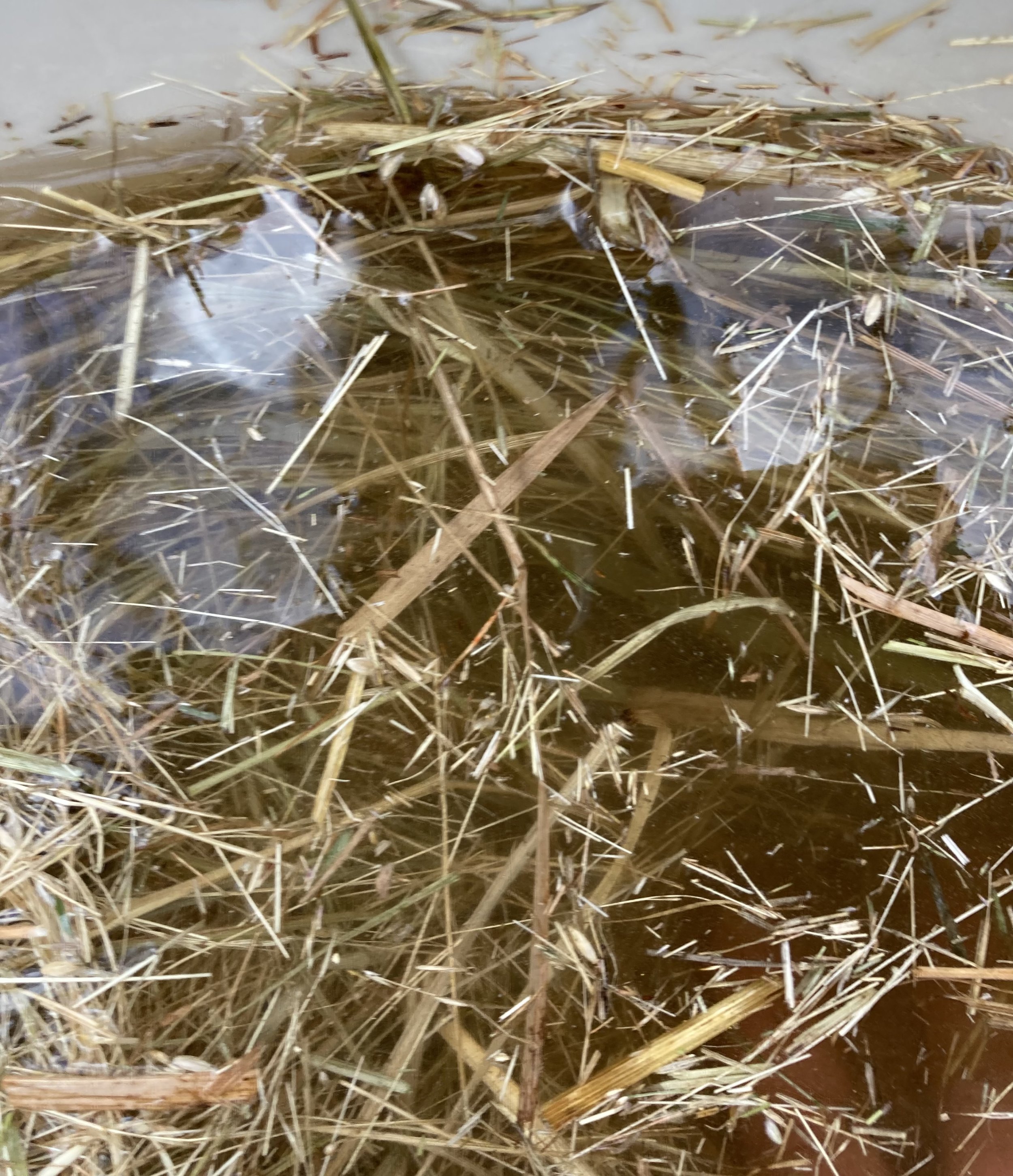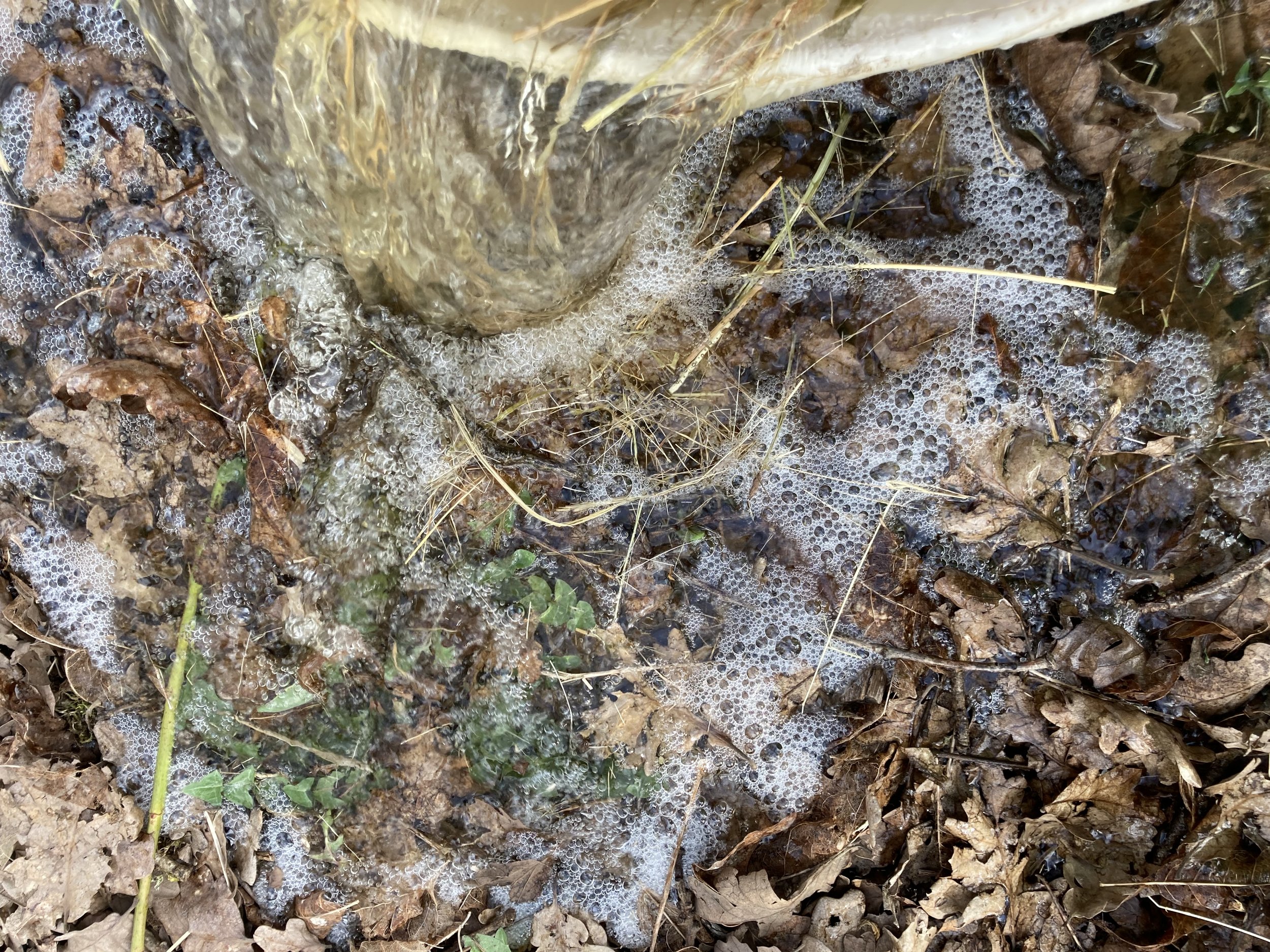Why and How to Soak Hay
Soaking hay may not be the most fun homestead chore, but it can have great benefit in reducing dust particulates and sugar in hay. The good news about soaking hay is that generally the only homestead animal that would ever need their hay soaked is horses. The other good news is that all other livestock generally have no problems eating soaked hay if your horse shares hay.
Why should you soak hay?
Soaking hay is not usually necessary. However, there are a few situations in which soaking may be beneficial.
Dehyration. If a horse is dehydrated and cannot consume its full water needs by drinking or if it is not drinking the proper amount of water, then soaking hay may be needed.
Dust or respiratory particulates. Hay can get dusty both on the field and in storage. The longer hay is stored, the more likely it is to accumulate dust. Some horses are sensitive to dust and other respiratory particulates in hay and will cough while eating. If your horse starts coughing periodically while eating, soak one meal of hay to see if that reduces coughing. If the horse stops coughing when fed soaked hay, then you can be sure that dust or other particulates are the cause. In this case you will need to soak the hay for each feeding until more suitable hay can be fed.
Reduce water soluble carbohydrates and sugar. Horses with HYPP (a genetic disease found in Quarter Horses) or Cushing’s (a common pituitary disorder) will absolutely need a low sugar diet. Laminitic horses and horses that have prior founder will also need a low sugar diet. Grasses naturally have sugars and this sugar passes on to the hay. Many factors contribute to the sugar level of hay such as species of grass, time of day harvested, and maturity of seed at harvesting. The only way to know the sugar level of your hay is to test it. Many hay dealers now test their hay so ask your dealer for the results. Extension offices can loan you a Hay Corer to take core samples of your hay to test sugar and other nutrients. Low sugar hay has a water soluble carbohydrate (WSC) content under 11%. If you can not find low sugar hay in your area you will need to soak the hay. The water soluble carbohydrates in the hay will leech into the water. In other words, you can soak out the sugar.
How long should you soak hay?
How long you soak your hay will depend on the reason that you are soaking it. If you are soaking hay to remove dust and other particles, then you should soak your hay for 10 minutes. If you are soaking hay to reduce the amount of sugars in the hay then you will need to soak your hay for longer. This is a question that a qualified veterinarian can help you answer based on your horse’s specific needs. The longer you soak hay the more water soluble carbohydrates and sugars will be soaked out. However, you do not want to remove the other water soluble vitamins from the hay. A soaking time of 30 minutes to one hour is recommended.
It is suggested that you buy tested low sugar hay if you are feeding a sugar sensitive horse. However, this is not always possible and that is why a person may choose the arduous task of soaking hay.
How to soak hay.
To soak hay, you will need large tubs. I use a muck bucket that has never held manure and a used cattle lick tub that has been cleaned. Hay is usually measured in “flakes” although a flake is not a weight measurement. Flakes weight anywhere from 2-8 pounds. Grass hay flakes are usually thicker and lighter than flakes of alfalfa and usually weight around 4 pounds. The green muck bucket tub seen below holds 4 flakes while the cattle lick tub holds 2-3. This is older hay that has begun to cause coughing in my horse.
Fill your tubs with water. Make sure the water is potable water and safe for drinking. Fill the tubs full enough to cover all the hay. Once the water level increases, you can use your hand to dunk the hay in and help compress it into the water. The soaking time for hay begins when all the hay is covered with water.
The water will not be clear after soaking, it will be brownish colored. This is normal and not indicative of bad hay. All hay has dust and other particulates as well as water soluble carbohydrates. This is what contributes to the brown color of the water. Even hay that is not particularly dusty will produce brown soaking water.
If you are feeding a dehydrated horse, there is no reason to dump the water out. If a horse cannot get their water needs met by drinking water alone or if your horse is not drinking enough water, then having to dunk their nose into a bucket of water to eat will help increase water consumption. The water should not stop most horses from eating the hay. Do not leave hay in water the stall for more than 24 hours and preferably less than 12.
If you are soaking hay to remove dust or sugar than you should dump the water out. Simply turn the bucket on its side and let the water pour out. You can use your hand to hold the hay back so that it does not fall out. However, wet hay is heavy, and it generally stays in the bucket. This water will have seed in it so be sure that you pour it out in an area that you do not mind grass seed in case the seed sprouts.
Note the foamy bubbles in the picture below. This is normal and is related to what has been soaked out of your hay. It is not indicative of hay being treated with chemicals.
Now you have a giant bucket of wet soaked hay. It will be heavy, even with all the water poured out. I personally feed the animals by leaving the hay in the bucket and placing the bucket in the stall. Throw out any non-consumed hay after 24 hours because it can mold. I personally remove all soaked hay after 12 hours and replace it with fresh soaked hay.
I hope you enjoyed this article about soaking hay. I am a former professional horse woman with 35 years-experience. Feel free to email me with any horse care questions you may have. I love to help new horse owners learn to care for these wonderful animals.





